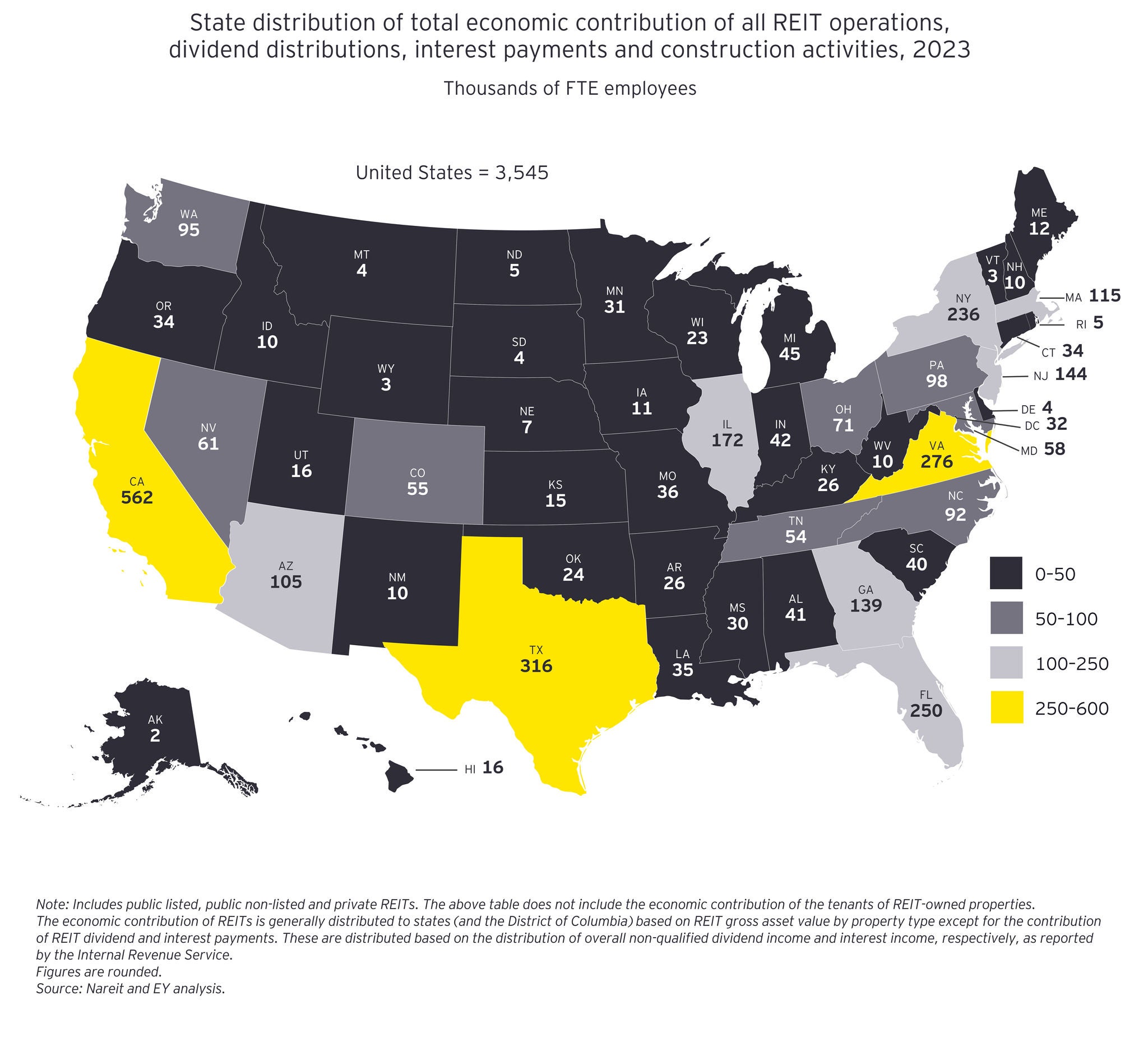EY refers to the global organization, and may refer to one or more, of the member firms of Ernst & Young Global Limited, each of which is a separate legal entity. Ernst & Young Global Limited, a UK company limited by guarantee, does not provide services to clients.
How EY can help
-
The EY REIT team can help your business successfully manage your capital agenda, allocate capital, enhance operations and adapt to disruptive influences.
Read more
Properties
US-headquartered, public-listed equity REIT portfolios included over 580,000 properties at year-end 2023, including:
- More than 2,100 office buildings
- More than 200 regional malls, over 2,600 shopping centers, more than 1,500 restaurant locations and in excess of 27,000 other retail properties
- More than 8,600 industrial facilities
- Over 3,100 multifamily rental properties, with over 800,000 units
- More than 1,700 hotels
- Approximately 8,400 medical facilities comprising nearly 2,800 medical office buildings, nearly 1,700 assisted living facilities, over 1,100 skilled nursing facilities and over 2,700 other health care facilities
- Nearly 8,000 self-storage facilities
- More than 250 data centers
- Nearly 100,000 telecommunications towers
- Approximately 200,000 single-family home rental properties
- More than 207,000 billboards and outdoor advertising units
- Approximately 15 million acres of timberland








